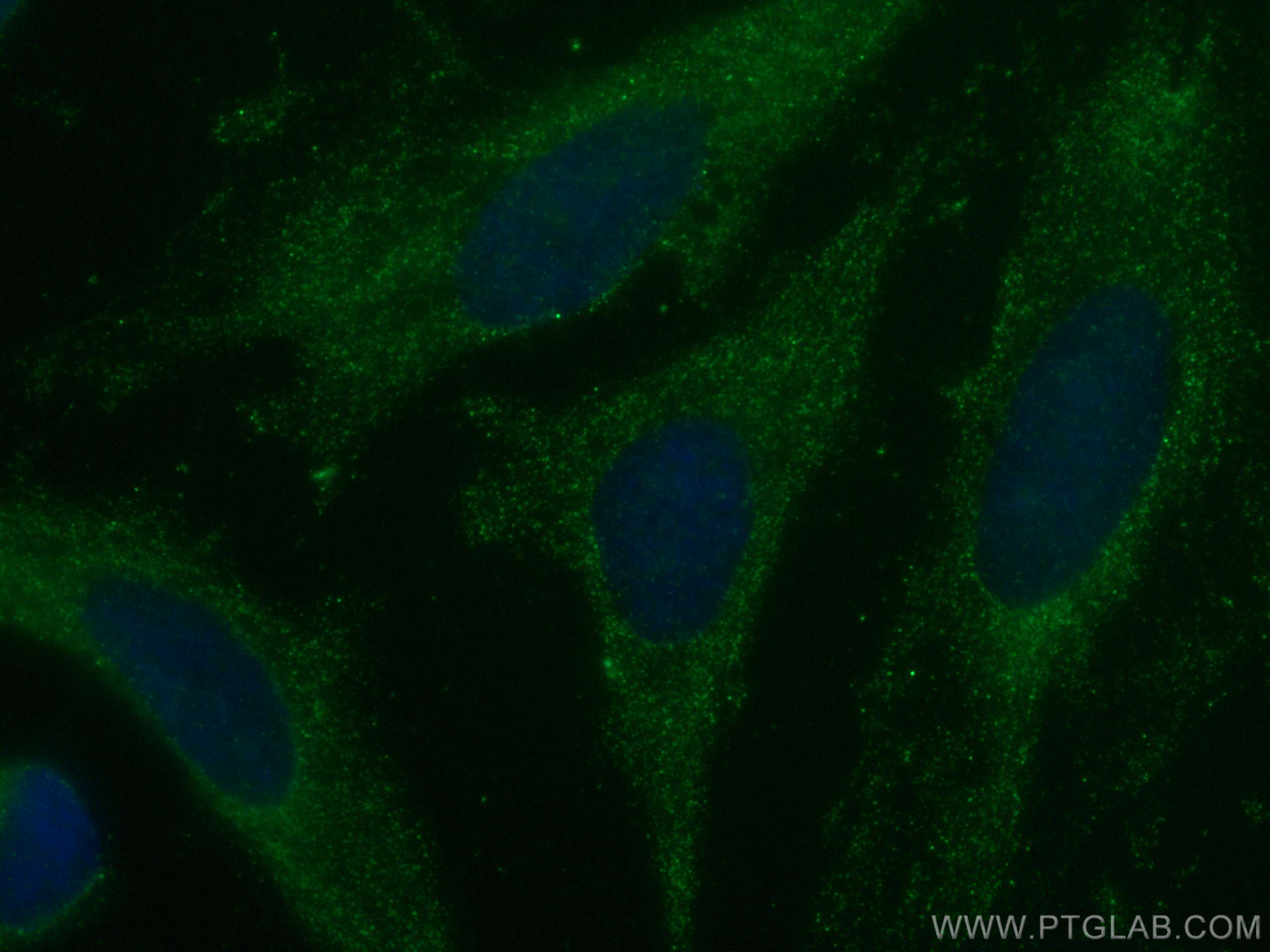Tested Applications
| Positive IF/ICC detected in | HeLa cells |
Recommended dilution
| Application | Dilution |
|---|---|
| Immunofluorescence (IF)/ICC | IF/ICC : 1:50-1:500 |
| It is recommended that this reagent should be titrated in each testing system to obtain optimal results. | |
| Sample-dependent, Check data in validation data gallery. | |
Product Information
CL488-67398 targets Caspase 4 in IF/ICC applications and shows reactivity with Human samples.
| Tested Reactivity | Human |
| Host / Isotype | Mouse / IgG1 |
| Class | Monoclonal |
| Type | Antibody |
| Immunogen |
CatNo: Ag29488 Product name: Recombinant human Caspase 4 protein Source: e coli.-derived, PET28a Tag: 6*His Domain: 1-377 aa of BC017839 Sequence: MAEGNHRKKPLKVLESLGKDFLTGVLDNLVEQNVLNWKEEEKKKYYDAKTEDKVRVMADSMQEKQRMAGQMLLQTFFNIDQISPNKKAHPNMEAGPPESGESTDALKLCPHEEFLRLCKERAEEIYPIKERNNRTRLALIICNTEFDHLPPRNGADFDITGMKELLEGLDYSVDVEENLTARDMESALRAFATRPEHKSSDSTFLVLMSHGILEGICGTVHDEKKPDVLLYDTIFQIFNNRNCLSLKDKPKVIIVQACRGANRGELWVRDSPASLEVASSQSSENLEEDAVYKTHVEKDFIAFCSSTPHNVSWRDSTMGSIFITQLITCFQKYSWCCHLEEVFRKVQQSFETPRAKAQMPTIERLSMTRYFYLFPGN Predict reactive species |
| Full Name | caspase 4, apoptosis-related cysteine peptidase |
| Calculated Molecular Weight | 377 aa, 43 kDa |
| Observed Molecular Weight | 43-48 kDa |
| GenBank Accession Number | BC017839 |
| Gene Symbol | Caspase 4 |
| Gene ID (NCBI) | 837 |
| RRID | AB_2934542 |
| Conjugate | CoraLite® Plus 488 Fluorescent Dye |
| Excitation/Emission Maxima Wavelengths | 493 nm / 522 nm |
| Form | Liquid |
| Purification Method | Protein G purification |
| UNIPROT ID | P49662 |
| Storage Buffer | PBS with 50% glycerol, 0.05% Proclin300, 0.5% BSA, pH 7.3. |
| Storage Conditions | Store at -20°C. Avoid exposure to light. Stable for one year after shipment. Aliquoting is unnecessary for -20oC storage. |
Background Information
Caspase 4 (CASP4), is a member of the cysteine-aspartic acid protease (caspase) family. Sequential activation of caspases plays a central role in the execution-phase of cell apoptosis.Caspase 4 is able to cleave and activate its own precursor protein, as well as caspase 1 precursor. Overexpression of caspase 4 will induce cell apoptosis.
Protocols
| Product Specific Protocols | |
|---|---|
| IF protocol for CL Plus 488 Caspase 4 antibody CL488-67398 | Download protocol |
| Standard Protocols | |
|---|---|
| Click here to view our Standard Protocols |




